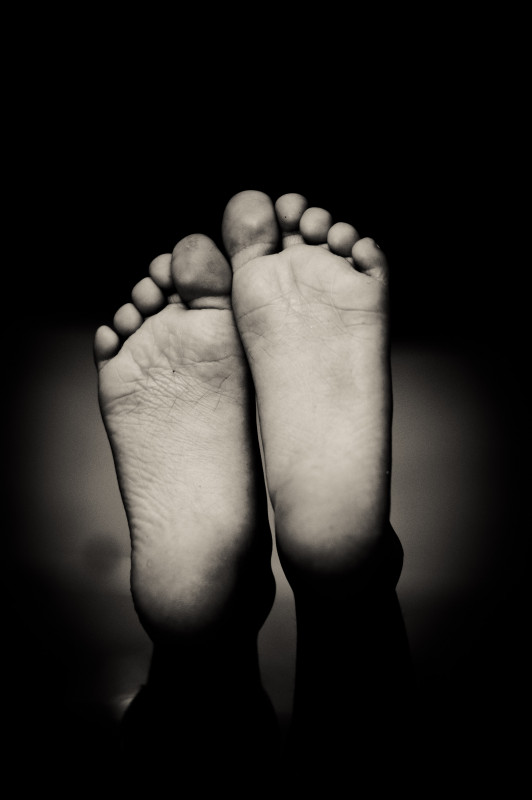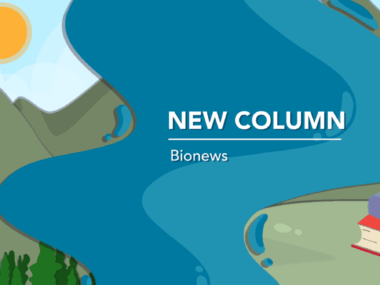Skin Thickening on Feet of EBS Patients Linked to Pain, Obesity
Written by |

Excessive thickening of the skin on the soles of the feet (plantar keratoderma) is a common and serious complication of all subtypes of epidermolysis bullosa simplex (EBS), a study from Germany reports.
This complication, appearing in early childhood, was significantly associated with pain, obesity, and limited mobility, negatively affecting employment for several adult patients.
These findings suggest that plantar keratoderma is more common than previously thought in EBS, and may be the starting point of a vicious cycle of pain, diminished physical activity, and excessive weight gain that worsens foot involvement in the disease, the researchers noted. Targeting it earlier may help to prevent or interrupt this cycle, improving patients’ life quality, they added.
The study, “Plantar involvement correlates with obesity, pain and impaired mobility in epidermolysis bullosa simplex: a retrospective cohort study,” was published in the Journal of the European Academy of Dermatology and Venereology.
Epidermolysis bullosa simplex is the most common type of EB, a group of rare disorders characterized by extremely fragile skin, which is easily injured and prone to fluid-filled blisters.
Typically appearing in infancy or early childhood, EBS ranges from mild blistering usually localized to the hands and feet (localized EBS), to more severe and generalized blistering and skin thickening (severe EBS).
While considered the mildest type of EB, EBS is associated with a high disease burden, even in localized forms, with blistering, inflammation, and pain as the main contributors.
Abnormal skin thickening on the soles of the feet, or plantar keratoderma, has been described in intermediate and severe EBS subtypes, but “its prevalence, characteristics, and impact on pain and EBS natural history are unknown,” the researchers wrote.
In addition, while obesity has also been associated with EBS, its frequency, onset, and consequences remain unknown. Notably, plantar keratoderma is also common in obese individuals due to greater pressure of the soles of the feet.
Given that the soles carry body weight and are therefore essential for everyday activities, researchers hypothesized that plantar keratoderma may represent “a determining factor in EBS, contributing to significant local and systemic [body-wide] complications, such as pain and obesity,” they wrote.
They retrospectively analyzed 16 years of data from 157 children and adults with EBS to assess the presence of plantar keratoderma and its potential association with body mass index (BMI), pain, and mobility. BMI is a measure of body size, considering both weight and height of a person.
Patients, with a mean age of 19, were seen at the Epidermolysis bullosa Center Freiburg, in Germany, between February 2003 and July 2019. All major EBS subtypes were represented in this group of patients, with the most common being localized EBS (47.8%), followed by severe, or generalized severe, EBS (24.8%).
Most patients had mutations in two known EBS-associated genes, KRT14 and KRT5 (43.9% each), and 16 disease-causative mutations were identified for the first time.
Results showed that 119 (75.8%) patients across all EBS subtypes had plantar keratoderma, which developed at a mean age of 4.3 (range, 9 months–12 years).
The most common type among all EBS forms was that focused at areas of mechanical pressure (focal), while abnormal skin thickening throughout the sole of the feet (diffuse) was mainly found in patients with intermediate and severe EBS.
Pain was reported by people with all EBS subtypes, but was most common and severe in those with localized and severe EBS, with blisters underneath plantar keratoderma reported as the most painful.
While 86.5% of children under age 10 were underweight, about 60% of adults (older than 16) with localized or severe EBS were pre-obese or obese — rates higher than those reported in the German population in 2017, the team noted.
One-third (33.1%) of patients also reported severely reduced mobility, and more than one-third (36.8%) of the 38 people with available information were incapable of working (18.1% of adults).
Notably, plantar keratoderma was significantly associated with pain, excessive sweating from the palms and soles, and feet infections, which were more common in those with severe forms of the disease. Diffuse, but not focal, skin thickening was significantly linked to a higher BMI in adults of all EBS subtypes, and to the need for wheelchair use.
Overall, “along with treating skin fragility and blistering, PK [plantar keratoderma] should be considered a potential marker of increased morbidity and may represent a target of EBS therapy development,” the researchers wrote.
Although EDS likely remains underdiagnosed, the challenges faced by these patients in everyday life “should not remain underestimated,” they added.
“We suggest that these aspects influence each other in a vicious cycle that requires timely interruption,” the team wrote, adding that “by treating PK, reducing pain, and avoiding overweight through regular and interdisciplinary consultations, the quality of life of people with EBS can potentially be increased.”





